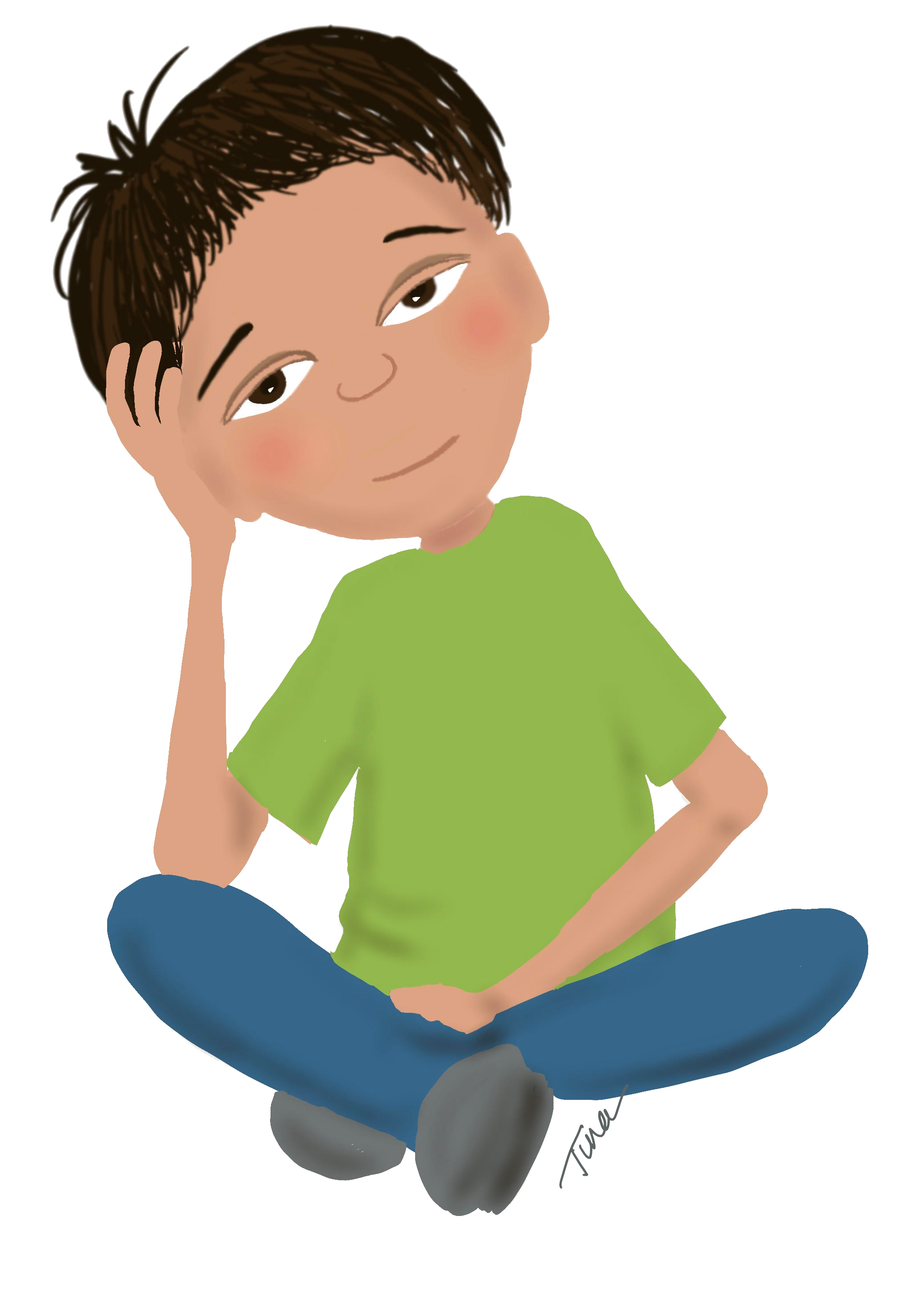Feelings Treasure Hunt
Bored
Adults and children alike tend to think of feeling bored as an uncomfortable or negative feeling. It is frustrating to us and our children when they feel bored. We feel pressure to take that feeling away by helping them figure out what to do. So we may provide them a list of all the things to do and wonder that they could ever be bored. They become dependent on us to “fix” their boredom. What if we take the pressure off of ourselves to “fix” our children’s “bored” feelings? What if we simply allow them to feel bored (because all feelings are ok) and then give them the tools they need to work through that bored feeling on their own?
As parents we need to try to see the potential opportunity that arises when our children are feeling bored. A feeling of boredom can spur children to try new things, such as to bake a cake, paint a picture, or create a robot. Our children are born to learn about the world around them through play and creative exploration. Researchers agree that the number one benefit of boredom seems to be that it motivates children to try new things thus fostering creativity.
What can we do to help kids learn to work through their bored feelings?
We can:
help them to create a list of things they love and things they want to try or learn more about
research ideas with them on the internet to add to the list
pay attention to their bored feeling
listen with empathy and then encourage them to choose something to do from their list
be careful not to choose an activity for them
In this way, when we show our children that we care about and understand their bored feelings while giving them the space and support to work through them on their own, we help them to grow! So let’s start by helping them to pay attention to and notice “bored” feelings.
ACtivities
Pot o’ Gold...
Find a small pot or jar and decorate it if you wish.
Find something small that can be the “gold” to add to your “pot” such as pennies, gummies, fish crackers, etc.
During the week, each time you notice or talk about feeling “bored” be sure to add a piece of “gold” to the pot.
At the end of the week, you can count/eat the “gold” as you reflect on the “bored” feelings that you noticed all week long.
NOTICE and LABEL “Bored” Throughout the Week
Watch for times when your child looks like they are feeling bored. Talk about how they feel and why? What does their face look like? What does their body feel like?
Notice (or recall) times when you yourself feel bored and “talk aloud” about it with your child. Talk about what has made you feel bored. Point out how your face looks and how your body looks and feels when you are feeling bored.
Don’t forget to notice and talk about characters on TV and in books who are feeling bored. Ask your children how they know the character is bored and why they think he/she might be feeling bored.
Play a Fun and Active Feelings Game
This game is loosely based on the Hullabaloo Game that can be purchased in stores.
You will need to make 3 different colored faces for each of the following emotions: sad, happy, silly, bored. (You can change the emotions faces as needed.)
You will also need painters tape and a hard floor.
The feeling faces should be spread out on the floor face up and taped down with painters tape.
Once everything is ready you can tell children to stand around the faces and wait till you tell them what to do.
Then you will give directions such as: “ crawl to a bored face or spin to a happy face.”
Children can choose whatever color face they want as long as it is the emotion that was called.
At some point you will tell children to “freeze” on whatever face they are on and then you will say, “Is anyone standing on the (select a color) bored face?”
Whomever is standing on the (selected color) “bored” face is the winner. You can tell the winner to take a bow or do a silly dance or take a victory jump. (There can be more than one winner if more than one person is standing on the (selected color) feeling face.
Players then return to surround the game and play begins again.
Feelings Toss
You will need 4 buckets/bins, 4 bean bags/balls, tape, paper and markers.
Together with your child create 4 different feelings faces. Be sure that “bored” is one of the faces you make.
Tape one of the large feelings faces on the outside of each bucket/bin..
Tell stories where the character is feeling one of the feelings on the buckets.
The child who is it then gets to tell you which feeling the character is experiencing in the story and tries to toss his ball/bean bag into the correct bucket/bin.
If your children are old enough...you might encourage one of them to make up stories to fit with the emotions.
Mega Blocks Emotions Faces
Gather some large interlocking blocks such as Duplos or Mega Blocks and a black permanent marker such as a sharpie.
On the smaller pieces create different looking eyes and on the larger pieces create different noses and mouths (smiles, frowns, straight lines, squiggly lines).
Experiment with your child at creating different faces.
As you do, ask your child what feeling the face is showing and how they know.
Try it the other way around by asking them to create a face to represent the feeling “bored” by putting the right eye, nose and mouth blocks together and then to tell about a time when he/she felt bored. Try this with other feelings that you have talked about with your child.
Name the Feelings Sensory Bin
You will need a large bin, dry beans, rice, sand or coffee grounds (smells particularly yummy), plastic eggs or rocks (big enough to show a feeling face), and other scooping and pouring tools (measure cups, spoons, bowls, etc.)
Set up your bin so that it is filled with about 2 inches of whatever dry substance you chose.
Add the scooping and pouring tools.
Finally draw feeling faces on rocks or plastic eggs and add them into the bin.
As your child explores the sensory bin, be sure to encourage him/her to notice the feeling on the rock/egg he/she finds, label it and talk about a time when you both experienced that feeling.
Be sure to focus on the “bored” feeling and review other feelings you have talked about with your child. (The following are feelings that have been discussed up to this point in this series and could also be used in this activity: calm, angry, happy, worried, excited, lonely, surprised, sad, silly and proud)
More Activities
Musical Chairs/”Bored” Game
This is a variation on the musical chairs game that becomes a social-emotional learning game!
Simply draw or have your child draw a bored looking face.
Each round tape the face to the bottom of one of the chairs. For the effect of surprise try to move the face under a different chair for each round.
Then, when the music turns off and students find their chairs.
Have your children check under their chair to see who is sitting on the “bored” seat. That child gets to show a bored face, do a bored walk or tell about a time when he/she felt bored.
Once you have played this game using the “bored” feeling...try using some of the other feelings that we have talked about in this series with your children. ((calm, angry, happy, worried, excited, lonely, surprised, silly and sad)
Play “Bored” Freeze Tag
Choose one person to be “it.”
It chases the other children and tries to tag them.
When a child is tagged they have to freeze in place.
The only way that they can be unfrozen is to tell about a time when he/she felt bored or show a bored face/walk.
Play Simon Says “Feelings”Game
Play Simon says with the children substituting feeling phrases for the usual directions. For example, say: “Simon says, look “bored.” In between commands you can ask them questions about those feelings, such as “What makes you feel bored?” “How does your body look and feel when you are bored? Does it always feel good to feel bored?”
Be sure to review the feelings already talked about in this Feelings Treasure Hunt Series. (calm, angry, happy, worried, excited, lonely, surprised, silly, proud and sad)
Feelings Book…
Talk with your child about times when he/she has felt bored.
Show each other what your bored face looks like.
Either take a picture of your child’s bored face and print it or have your child draw her bored face. (Use a mirror if your child is going to draw his/her face.)
Protect the picture by slipping it into a plastic baggie (quart size works well).
You can also make calm, angry, happy, worried, excited, lonely, surprised, sad, silly and proud face pages to add to your book. (These are the feelings previously talked about in this series.)
As you learn about new emotions don’t forget to add those pages to your book. You can tape the baggies together along the plastic seal to create the binding of your book using duct tape or packaging tape.
Read your feelings book often. Try to help your child remember times when they felt that feeling and share times when you felt the same way.

